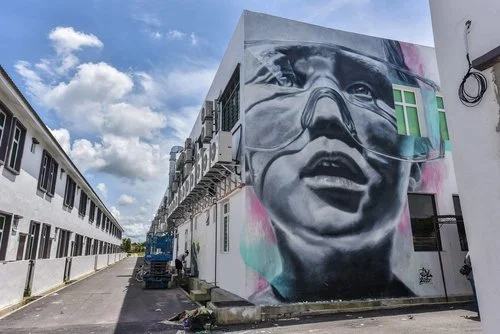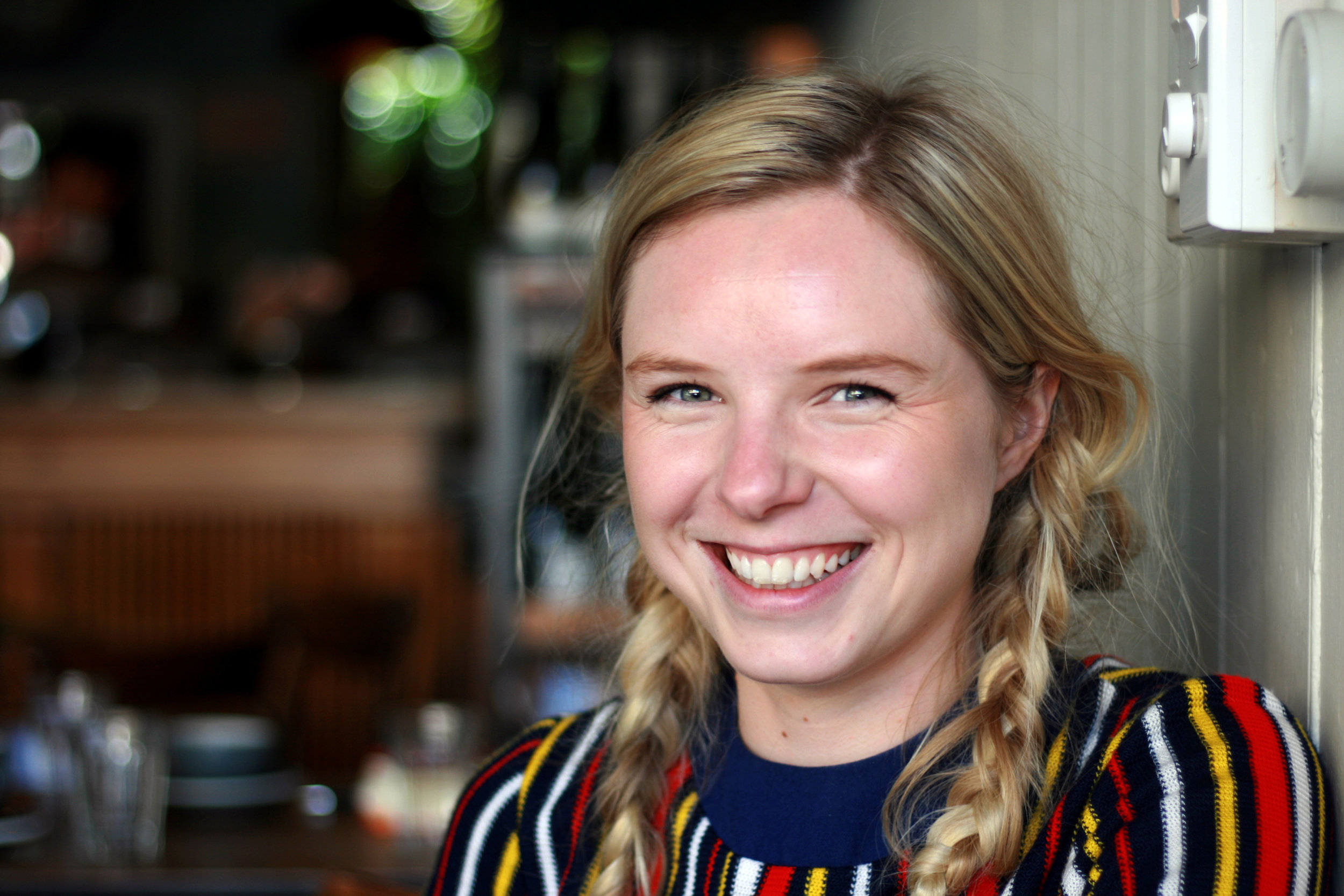When we started I was thinking about doing something psychedelic and sonic, but also based around grooves and rhythms. And that’s essentially what it still is…a core drum and bass part that’s the rhythmic engine.
We’re blessed by having had extraordinarily awesome drummers in very different ways. Jeremy had never played drums before and used to play with his arms held out like this (gesturing); his drum concept was a very physically demanding style and he didn’t alter it that much, especially at the beginning.
Nell: He got really amazing though. When we’d tour around, people would be captivated watching him thinking, “is he going to pull this off with that technique”?
Dan: He’d also do things like have a banana in his mouth for the whole gig, or plastic flowers.
Nell: Things to make it even more difficult for himself. Actually, our drummer now does that too—like wearing things that make it impossible for him to see.
Erika: Quite often that’s what people would say after a show. He kept that banana in his mouth the whole time!
Why do you guys think Wellington’s creative scene has been strong since the 1970s? What’s drawn people here?
Nell: I think it waxes and wanes. It’s not like there was a less interesting community of music 5 years ago versus 15 years ago. I think people are always falling in and out of the place. Part of the benefit of living here is that it’s really tiny. It’s easy to get together with people to rehearse and jam. In the past there have been some really good music venues in Wellington, but right now it’s pretty slim on the venues.
Erika: I guess it’s also the most liberal city in New Zealand. It’s the political center and has good universities so I there’s a lot of open mindedness. There are always a lot of young, creative, hungry, awesome people wanting to do stuff.
The album, Brothers and Sisters of the Black Lagoon, came out in 2016. Tell us a little bit about the making of that album and how it came together.
Erika: We recorded it here [at the Pyramid Club].
Nell: Often times it’s Dan who writes the material we get started with. He’ll often get started with a drumbeat and a base line and we’ll jam off that. Other times we’ll just jam and see what comes out of it. We might record part of the jam and develop that into something.
Dan: The best stuff is when we just play and listen back to hear what parts are cool. The best stuff usually comes the first time you try it and don’t overthink it. The trick is to keep it fresh and spontaneous.
In my own writing process, the instrument I write off is the drum. So I just sit at the kit and think up lines, melodies, and riffs and record it on my phone.
I love that you create some of your own instruments. Can you tell us about that process?
Dan: Yea, I guess it’s something I’ve been interested in for ages. I just make shit from bits and pieces. They’re not particularly well crafted. I’ve made one proper acoustic guitar, which takes ages of work. Usually the process is just “what is this and what does it sound like?”
Do you have a favorite homemade instrument?
Dan: Not really. I’m not super patient with making things perfect. We’ve been playing an instrument I made called the Ektar. It’s made from the slat of a futon bed with a string on it. With Orchestra of Spheres, the homemade instruments come and go. There is one main homemade instrument I play: the biscuit tin guitar. It’s literally just made from a futon bed, a biscuit tin and drum sticks whittled down. It’s cheap and cheerful.
The sound of the band essentially came from the limitations of these homemade instruments and the tuning at the time. We have this sort of “Orchestra of Spheres” tuning.
We don’t really measure the tuning. Some bands or composers who do microtonal stuff are systematic, but ours is more random out-of-tune-ness. It’s part of the charm. Although sometimes you listen to the recording and it’s less charming…when you listen back to a melody you’re looking forward to hearing and then think, “oh god.”
Nell: Sometimes, when you sing with homemade instruments it can be tricky. It’s hard to find the pitch between the different tunings, but it’s nice having a bit of chaos in there.
Dan: In fact, having constraints helps with making creative choices. I love working with tape machines because you’ve got four buttons: ‘on’ ‘off’ ‘fast’ ‘slow.’ There are only a few choices, versus a digital equivalent. When you narrow it down to work within confines, it actually frees you up.
What are some of your favorite moments as part of the band?
Dan: There was a nice point on our first trip overseas, in 2011, when we played a gig at a festival called, All Tomorrow’s Parties. We were playing between Pharoah Sanders and Sun Ra Arkestra. To me that was a super awesome gig because I’ve been listening to those artists for so long. To be sandwiched between those two was a pretty nice moment.
Erika: On our second tour we were playing off an island near Marseille. It was in the ruins of this old quarantine hospital and we were playing just as the sun was setting. We played a really great show and got called back for three encores or something … everything about that evening was kind of magical. It felt really special.
Nell: I always remember the last gig we played on our first big tour. The first tour was quite a full one. We just weren’t used to it. It was intense and exhausting and by the time we got to the last gig, we were all exhausted. But we played this amazing gig and it was the first time I felt like we were anticipating what each other was doing and working like one weird, morphing creature. It felt really amazing musically.
We were so tired. But it was like your critical mind goes to sleep and you access different parts of your creativity. It was cool because musically we just got better and better. It was a special family moment.
What’s next for Orchestra of Spheres?
Erika: We’re about to do a new album, in 2-3 weeks time.
Dan: We’re recording with an old friend who has a studio in Newtown. It’s an awesome place.
Erika: It’s another one of those amazing places that are hard to find, but when you find them it’s amazing. It’s a big old shed. He lives in it and he collects junk that he turns into instruments. He’s incredible. He’s made a little studio there with a vocal booth.
Dan: Earlier this year we did a gig with a whole bunch of musicians, 12 people maybe. The idea for this album is to get a few of those people in for different tunes and broaden the sound palate from what we’ve done in the past. Nell has been playing the harp lately, and maybe we’ll get in a few other instruments as well.













































